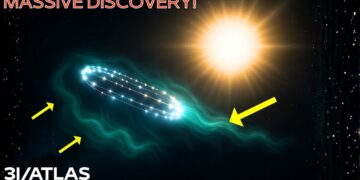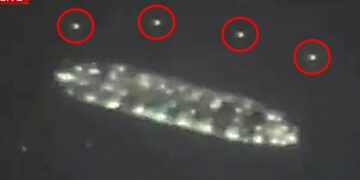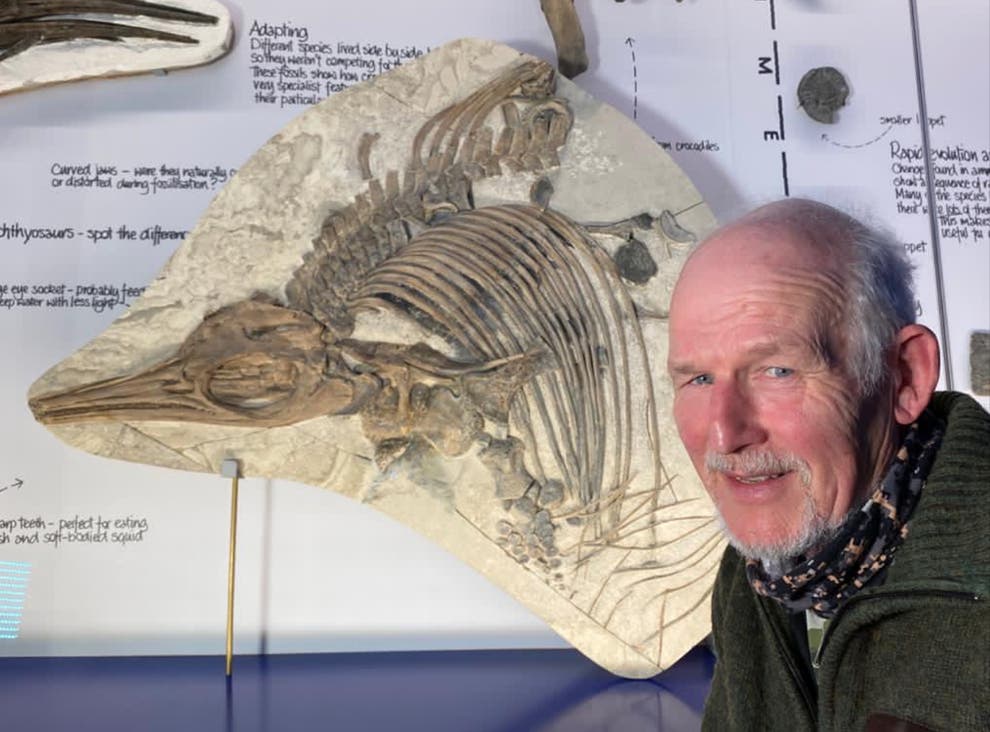NASA scientists first spotted 3I/Atlas in July—a faint speck of light gliding through a sea of stars, an extraordinarily rare visitor from beyond our solar system. For months, 3I/Atlas drifted silently through space. Scientists tracked it, noted its presence, and moved on. Then, unexpectedly, Atlas emitted a signal so powerful it was detected by antennas worldwide. Was it a cosmic anomaly, a warning, or something beyond our current understanding? No one knows. But one thing is certain: if Atlas can transmit once, what might follow is unpredictable—and that’s unsettling.
Everything about space feels wrong. Between late June and early July, automated telescopes across the globe detected something that defied explanation. The Atlas detection system, designed to identify Earth-threatening asteroids, instead found an object that broke every known rule of celestial motion. Unlike typical space debris following predictable paths, this object raced through our solar system at speeds that left seasoned astronomers triple-checking their data. The numbers were staggering: 152,000 mph, far surpassing the 30,000 mph typical of most space rocks. By tracing its trajectory backward using computer models, researchers discovered it originated not from the asteroid belt or the icy regions beyond Neptune, but from the vast emptiness between stars. This object had likely traveled through that void for tens of thousands of years before entering our cosmic neighborhood.
What makes this discovery truly unnerving isn’t just its speed or origin—it’s the timing. For centuries, humanity scanned the skies without detecting a single interstellar visitor. Then, starting in 2017, these objects began appearing regularly, each stranger than the last. The odds of this being a coincidence are so minuscule they’re practically negligible. Either the universe has suddenly started throwing anomalies our way just as our detection technology improved, or something else is at play.
Named 3I/Atlas following the convention for interstellar objects, calling it just another space rock feels increasingly inadequate as global observatories gather more data. This object behaves according to physics that don’t align with our textbooks, reflecting light in ways that suggest surfaces smoother than those typically shaped by billions of years of cosmic weathering.
The Physics Puzzle
Traditional space rocks adhere to predictable patterns governed by gravity, momentum, and Newtonian orbital mechanics, allowing precise plotting of their paths. 3I/Atlas, however, seems to have skipped that lesson. Its trajectory defies the expected gentle curves of gravitational influence, appearing almost deliberately planned. Its brightness doesn’t match its apparent size—telescopes estimate dimensions based on reflected light, but 3I/Atlas shines as if made of polished metal rather than the rough, battered surfaces typical of ancient debris. This reflectivity suggests either highly unusual natural processes or materials not formed through random cosmic evolution.
Even stranger is its rotation. Natural objects, after millions of years of collisions and gravitational tugs, tumble chaotically, producing irregular light variations. 3I/Atlas rotates with mechanical precision, consistently orienting specific sides toward our telescopes in a way that feels almost intentional. Radio telescopes have detected electromagnetic signatures hinting at internal structural complexity, with density variations and possible hollow sections that don’t align with the solid composition expected of naturally formed objects. Unlike uniform chunks of rock or ice, 3I/Atlas suggests an engineered architecture.
Most disturbingly, it makes course corrections without visible propulsion. It accelerates and decelerates in tiny increments, detectable only by highly sensitive instruments. No exhaust plume, gas emission, or particle trail explains these changes. Whatever mechanism drives this defies our understanding of rocket science.
The Webb Telescope’s Disturbing Revelations
When the James Webb Space Telescope turned its advanced instruments toward 3I/Atlas, researchers hoped for clarity. Instead, the data deepened the mystery. Thermal imaging revealed temperature distributions that don’t match natural heating patterns—unlike typical objects with chaotic temperature variations, 3I/Atlas maintains stable thermal signatures, with one hemisphere consistently warmer, suggesting internal heat generation or deliberate thermal management.
Spectroscopic analysis detected surface materials absent from asteroid or comet databases, including complex carbon-based structures typically associated with biological processes or advanced manufacturing, not random geological formation. Infrared data showed geometrically regular surface features, uncommon in natural debris that bears the scars of millions of years of impacts. 3I/Atlas’s surface suggests either remarkable natural preservation or artificial construction designed for durability.
Density measurements indicate internal cavities or layered construction, unlike the uniform structure of naturally formed rocks. The presence of subtle electromagnetic activity suggests internal systems or processes, not the random noise typical of space debris. These findings point to either exotic natural phenomena or active technological systems within the object.
Three Visitors That Defy Logic
Since 2017, a pattern has emerged that challenges our understanding of interstellar space. Before that year, no confirmed interstellar visitors were detected despite centuries of observation. Then, suddenly, these objects began appearing, each more peculiar than the last.
1I/’Oumuamua, discovered in 2017, puzzled researchers with its elongated shape, lack of a cometary tail, and unexplained acceleration without visible propulsion, sparking debates about artificial origins. 2I/Borisov, found in 2019, appeared more conventional with a cometary tail but exhibited unusual volatility and high velocity, suggesting formation around a different star. 3I/Atlas combines the strangest traits of both—’Oumuamua’s reflective properties and acceleration, plus Borisov’s extreme speed and exotic trajectory. The probability of encountering three such anomalies in a few years, after billions of years of apparent emptiness, is virtually zero. Either we’re witnessing an extraordinary cosmic coincidence, or these objects represent something beyond natural debris.
The timing of these discoveries aligns perfectly with advancements in our detection technology, suggesting either incredible luck or a deliberate reveal as our instruments reached new thresholds.
The Official Silence
The response to 3I/Atlas from major space agencies marks a stark departure from the usual transparency of astronomical discoveries. NASA’s Jet Propulsion Laboratory, typically open with data, restricted access to 3I/Atlas information after confirming its unusual traits. Publicly available observational schedules vanished, and requests for raw telescope data were denied or heavily redacted for unspecified “security reasons.” The European Space Agency followed suit, citing internal reviews never applied to prior discoveries. International research teams were abruptly excluded from data-sharing networks, and some scientists were reassigned or removed from observation teams without explanation.
Freedom of Information Act requests have yielded heavily redacted documents, with claims of “national security” implications for what should be routine observations. This unprecedented secrecy suggests officials have uncovered something too significant to share. The restrictions began when Webb’s spectroscopic data revealed potential artificial materials and complex internal structures.
Testing Humanity’s Intelligence
The most unsettling theory is that these interstellar visitors are part of a systematic evaluation of humanity’s technological and intellectual readiness for contact with advanced civilizations. Their timing, characteristics, and behavior suggest they could be probes designed to test our observational capabilities and scientific reasoning.
These objects display traits just unusual enough to challenge our assumptions about natural processes, yet ambiguous enough to be dismissed as exotic phenomena by skeptics. Their appearances coincide with milestones in our detection technology, as if calibrated to remain undetected until we reached specific capabilities. The progression—from barely detectable anomalies to increasingly obvious signs of potential artificiality—suggests a testing protocol, gradually preparing us for evidence of extraterrestrial intelligence.
Materials That Break the Rules
Webb’s analysis of 3I/Atlas’s composition revealed molecular structures that shouldn’t survive interstellar space’s harsh conditions. The carbon-based compounds detected aren’t simple molecules but complex arrangements typically requiring biological or advanced manufacturing processes. These suggest either biology or technology—neither expected in an object drifting for millennia. The surface shows geometric consistency, resisting the chaotic pitting typical of cosmic debris. Its electromagnetic properties—reflecting and absorbing radiation in engineered-like ways—further defy natural material behavior.
Acceleration That Defies Logic
3I/Atlas changes speed and direction without visible propulsion, echoing ’Oumuamua’s behavior but observed with greater precision. These subtle course corrections maintain trajectories that defy natural physics, with no detectable exhaust or emissions. The adjustments seem calculated to maximize observation time within our solar system, often aligning with optimal viewing angles for our telescopes. This coordination suggests either astonishing coincidence or intentional maneuvering. The energy source behind these changes remains unidentified, challenging our understanding of space propulsion.
The Unacknowledged Pattern
The appearance of three increasingly bizarre interstellar objects in a few years, after billions of years of apparent absence, suggests cosmic processes beyond our comprehension. Their discovery aligns too closely with our technological advancements to be random. These objects force us to expand our scientific frameworks, considering propulsion, materials, and navigation technologies previously unimaginable.
Official responses indicate that agencies recognize implications far beyond routine observations. The unprecedented secrecy suggests discoveries that could reshape our understanding of our cosmic role. These objects challenge the assumption that we’re merely observers of a passive universe, raising the possibility that we’re participants in an interactive process involving intelligence and intention we don’t yet understand. Each mission we launch and signal we send may be observed and evaluated in return, adding profound new dimensions to our place in the cosmos.























